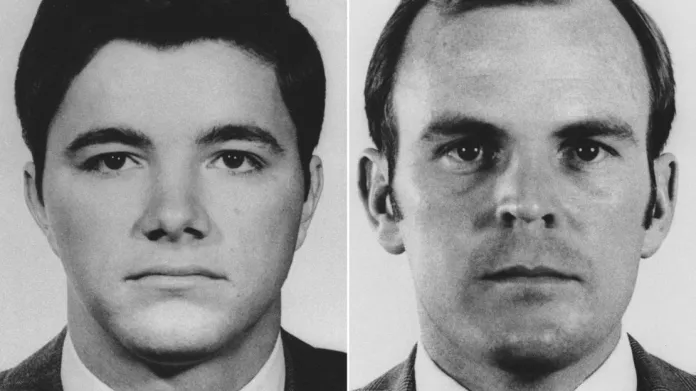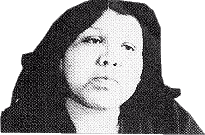American Indian Movement Leader Will Likely Die in Prison After Being Denied Parole
On July 2, Leonard Peltier (Turtle Mountain Ojibwe), a leader of the American Indian Movement (AIM) in the 1970s, was denied parole by the U.S. Parole Commission, ensuring that he will most likely die in federal prison.
Suffering from serious health issues as he nears 80, Peltier is serving two consecutive life sentences for killing FBI agents, Jack R. Coler and Ronald A. Williams, on the Pine Ridge Indian Reservation in South Dakota in June 1975.
The federal government, for example, withheld a ballistics report at Peltier’s trial indicating the fatal bullets did not come from his weapon, according to court documents Peltier filed on appeal.
One prosecution witness, Michael Anderson, testified during cross-examination that he was threatened by an FBI agent, and said that he agreed to testify in exchange for criminal charges against him in another case being dropped.
Another witness, Myrtle Poor Bear, said that she had been coerced into signing a false affidavit implicating Peltier and that her life had been threatened. “They had the law in their hands, and could do anything,” she said of the FBI.
AIM and Pine Ridge
A member of the Turtle Mountain band of Chippewa Indians from North Dakota, Peltier had been a leader of AIM, which staged an occupation of the Pine Ridge Reservation in the early 1970s in an effort to reclaim land that had been taken during the 19th century Indian Wars.
Pine Ridge was strategically located at the site of the 1890 Wounded Knee Massacre, where the U.S. Army’s 7th Cavalry regiment killed about 300 Lakota Sioux civilians in revenge for the killing of General George Armstrong Custer at the Battle of the Little Bighorn.
Peltier had traveled to Pine Ridge in South Dakota in 1975 to help AIM members defend themselves against the head of the Oglala Sioux tribal council, Richard Wilson, who worked with the FBI and deployed his private militia, Guardians of the Oglala Nation (GOON), against AIM.
GOON killings went unpunished as the homicide rate on the Pine Ridge Reservation became among the highest in the U.S.
Conflicting Narratives
On June 26, 1975, Coler and Williams were on the Pine Ridge Indian Reservation to arrest a man, Jimmy Eagle, on a federal warrant for armed robbery in connection with the theft of cowboy boots, according to the FBI’s investigative files.
While they were there, the agents radioed that they had come under fire in a shootout that lasted ten minutes, the FBI said.
Peltier was fingered in part because his gun—an AR-15—matched the one that killed the agents (this evidence was put into dispute), and because he was found by an Oregon state trooper after he had fled with Agent Coler’s handgun in a bag with his fingerprint on it.[2]
In Peltier’s version of events, he was in bed at 11:00 a.m. when he heard gunshots and fellow AIM members told him “Man, we’re being attacked. We’re being attacked.” Peltier then said “Oh, my God.” and grabbed an old rifle and started running up to the house and fired his gun after being fired upon.
The FBI has said the agents were shot without provocation, though AIM said that they triggered the shootout, and killed an Indigenous man, Joe Stuntz, whose death was never investigated.
In the FBI’s version, Peltier was stopped while driving in a red truck because he had an outstanding warrant for the attempted murder of a police officer. Peltier allegedly exited the vehicle along with Norman Charles and Stuntz, and began firing at the FBI agents.
Peltier says he knows that his shots did not hit the FBI agents and he was not the one who killed them. This assessment appears to have been corroborated by Bob Robideau, who was charged with Peltier but was exonerated in a separate trial, who said in 2004: “I am ‘Mr. X’ (which is no lie) and I did kill them [the FBI agents] with the honor befitting a warrior, but they died like worms.”[4]
During a June 8, 2024, interview, Peltier’s serving attorney Kevin Sharp, a former U.S. District Judge in Tennessee, stated:
“Pine Ridge was a powder keg with the Goon Squad operating there with the government’s help. AIM was there to protect those who were not part of the Goon Squad. There were many murders and assaults in a three-year timeframe. When plain-clothed agents in unmarked cars arrived, a firefight ensued. Leonard did not shoot the agents, and the FBI knew this but withheld evidence. The court of appeals acknowledged this but couldn’t overturn the conviction due to legal standards. Judge Heaney, who wrote the opinion, later supported clemency for Leonard. Now, 38 of Judge Heaney’s former clerks support parole for Leonard, including three who worked on his case. The government admits they don’t know who killed the agents, but it wasn’t Leonard. It’s time to release Leonard and start the healing process.”
After the most recent parole hearing, Sharp commented that “today’s announcement continues the injustice of this long ordeal for Leonard Peltier. This decision is a missed opportunity for the United States to finally recognize the misconduct of the FBI and send a message to Indian Country regarding the impacts of the federal government’s actions and policies of the 1970s.”

See Peter Matthiessen, In the Spirit of Crazy Horse: The Story of Leonard Peltier and the FBI’s War on the American Indian Movement (New York: Penguin Books, 1992). ↑
It has been alleged that Peltier confessed to killing the two FBI agents in Marlon Brando’s motor home, and that AIM activist Ana Mae Aquash was murdered to protect the disclosure from being made public. Peltier was arrested by the Royal Canadian Mounted Police (RCMP) on a reservation in Calgary, Alberta, in February 1976. He was convicted on first-degree murder charges in April 1977. Darrelle Dean “Dino” Butler, Robert Eugene Robideau, and James “Jimmy” Eagle were also charged in a federal indictment with two counts of first-degree murder and aiding and abetting, though they were either acquitted at trial or, as in Eagle’s case, the charges were dropped. Following his initial conviction, Peltier made an armed escape from the federal penitentiary in Lompoc, California, and was apprehended after a farmer, whom he threatened with a rifle and whose truck he stole, turned him in. ↑
Robideau said he had no remorse because it was a “defensive action” against “our enemies.” ↑
When you donate to CovertAction Magazine, you are supporting investigative journalism. Your contributions go directly to supporting the development, production, editing, and dissemination of the Magazine.
CovertAction Magazine does not receive corporate or government sponsorship. Yet, we hold a steadfast commitment to providing compensation for writers, editorial and technical support. Your support helps facilitate this compensation as well as increase the caliber of this work.
Please make a donation by clicking on the donate logo above and enter the amount and your credit or debit card information.
CovertAction Institute, Inc. (CAI) is a 501(c)(3) non-profit organization and your gift is tax-deductible for federal income purposes. CAI’s tax-exempt ID number is 87-2461683.
We sincerely thank you for your support.
Disclaimer: The contents of this article are the sole responsibility of the author(s). CovertAction Institute, Inc. (CAI), including its Board of Directors (BD), Editorial Board (EB), Advisory Board (AB), staff, volunteers and its projects (including CovertAction Magazine) are not responsible for any inaccurate or incorrect statement in this article. This article also does not necessarily represent the views the BD, the EB, the AB, staff, volunteers, or any members of its projects.
Differing viewpoints: CAM publishes articles with differing viewpoints in an effort to nurture vibrant debate and thoughtful critical analysis. Feel free to comment on the articles in the comment section and/or send your letters to the Editors, which we will publish in the Letters column.
Copyrighted Material: This web site may contain copyrighted material the use of which has not always been specifically authorized by the copyright owner. As a not-for-profit charitable organization incorporated in the State of New York, we are making such material available in an effort to advance the understanding of humanity’s problems and hopefully to help find solutions for those problems. We believe this constitutes a ‘fair use’ of any such copyrighted material as provided for in section 107 of the US Copyright Law. You can read more about ‘fair use’ and US Copyright Law at the Legal Information Institute of Cornell Law School.
Republishing: CovertAction Magazine (CAM) grants permission to cross-post CAM articles on not-for-profit community internet sites as long as the source is acknowledged together with a hyperlink to the original CovertAction Magazine article. Also, kindly let us know at info@CovertActionMagazine.com. For publication of CAM articles in print or other forms including commercial internet sites, contact: info@CovertActionMagazine.com.
By using this site, you agree to these terms above.
About the Author

Jeremy Kuzmarov holds a Ph.D. in American history from Brandeis University and has taught at numerous colleges across the United States. He is regularly sought out as an expert on U.S. history and politics for radio and TV programs and co-hosts a radio show on New York Public Radio and on Progressive Radio News Network called “Left on Left.” He is Managing Editor of CovertAction Magazine and is the author of five books on U.S. foreign policy, including Obama’s Unending Wars (Clarity Press, 2019), The Russians Are Coming, Again, with John Marciano (Monthly Review Press, 2018), and Warmonger. How Clinton’s Malign Foreign Policy Launched the U.S. Trajectory From Bush II to Biden (Clarity Press, 2023). Besides these books, Kuzmarov has published hundreds of articles and contributed to numerous edited volumes, including one in the prestigious Oxford History of Counterinsurgency . He can be reached at jkuzmarov2@gmail.com and found on substack here.











0 comments:
Post a Comment